72 years ago today, a powerful F3 tornado devastated a large part of Montgomery, killing 26 and injuring at least 300. It‘s Montgomery’s biggest weather disaster. It was a Monday afternoon, February 12, 1945, 5:18pm, about 10 minutes before sunset. 73 degrees. The storm struck without warning. There were no warnings in 1945. Damage was extensive. Several neighborhoods were affected, from the western part of the city, from around Day and Bell St., and skirting across the northern part of Montgomery. The epicenter of the worst damage was the Chisolm community, where 35 homes were destroyed, at least a couple of dozen more heavily damaged. The greatest loss of life was here. It was one of 7 significant tornadoes in Alabama that day, killing close to 4 dozen people.
THE SET-UP: The morning weather map from the U.S. Weather Bureau shows, powerful low pressure developing along the Texas coast moving northeastward. Upper Air observations were not available yet. We can only imagine what severe weather ingredients had to be available that day. Probably, if it happened today, it would be a “high risk threat.” Showers had occurred off and on during the day in Montgomery. Official rainfall was .67 with a high of 73. In those days, observations were taken at Gunter Air Field which was the Montgomery public airport at the time.
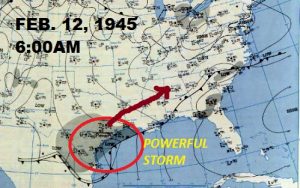
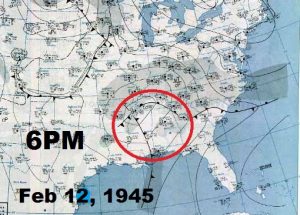
MONTGOMERY ADVERTISER: We have a few snapshots from the front page of the Montgomery Advertiser that following Tuesday morning, including some damage pictures. Keep in mind, with the tornado occurring at 5:18PM, the newspaper had to do a lot of work to get the information in the morning paper. Thanks to Steve Arnold and his crew at the Advertiser for searching the archives. A quote from the paper that morning, 72 years ago: “We saw it coming and lay down behind a bush about 50 yards from the house.” Judge Carter related. “The storm swooped in, ripped the roof off showered bricks and boards all around us. It seemed like two or three minutes and then it was over.”

Here’s an aerial shot of the devastation the following day.
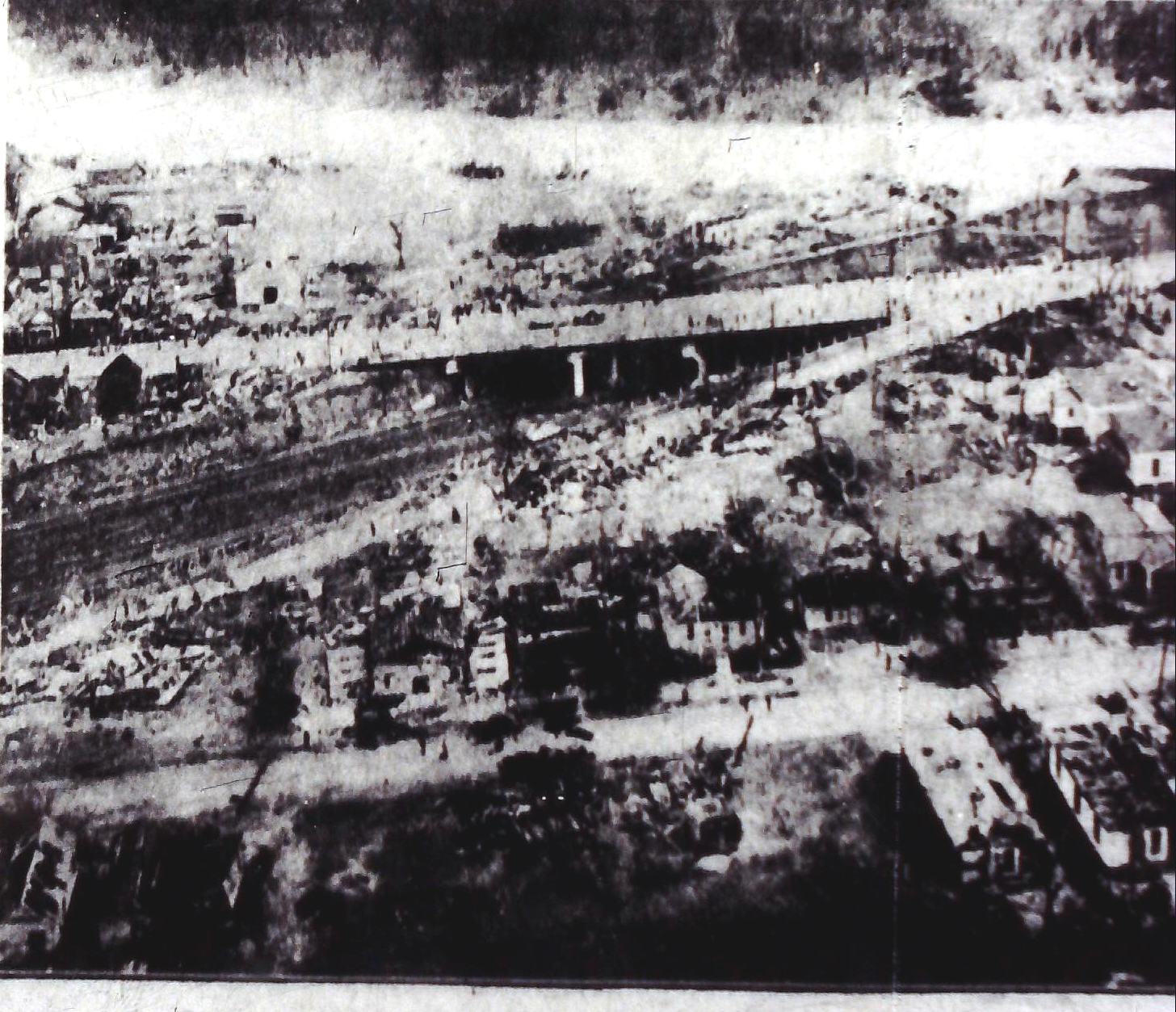
A member of our group, Tracey Stallings, just sent in this picture from her family’s archives of the damage that day. This is in Highland Park. Man pictured is Gordon Herring. Picture taken by E.Z. Herring (below)
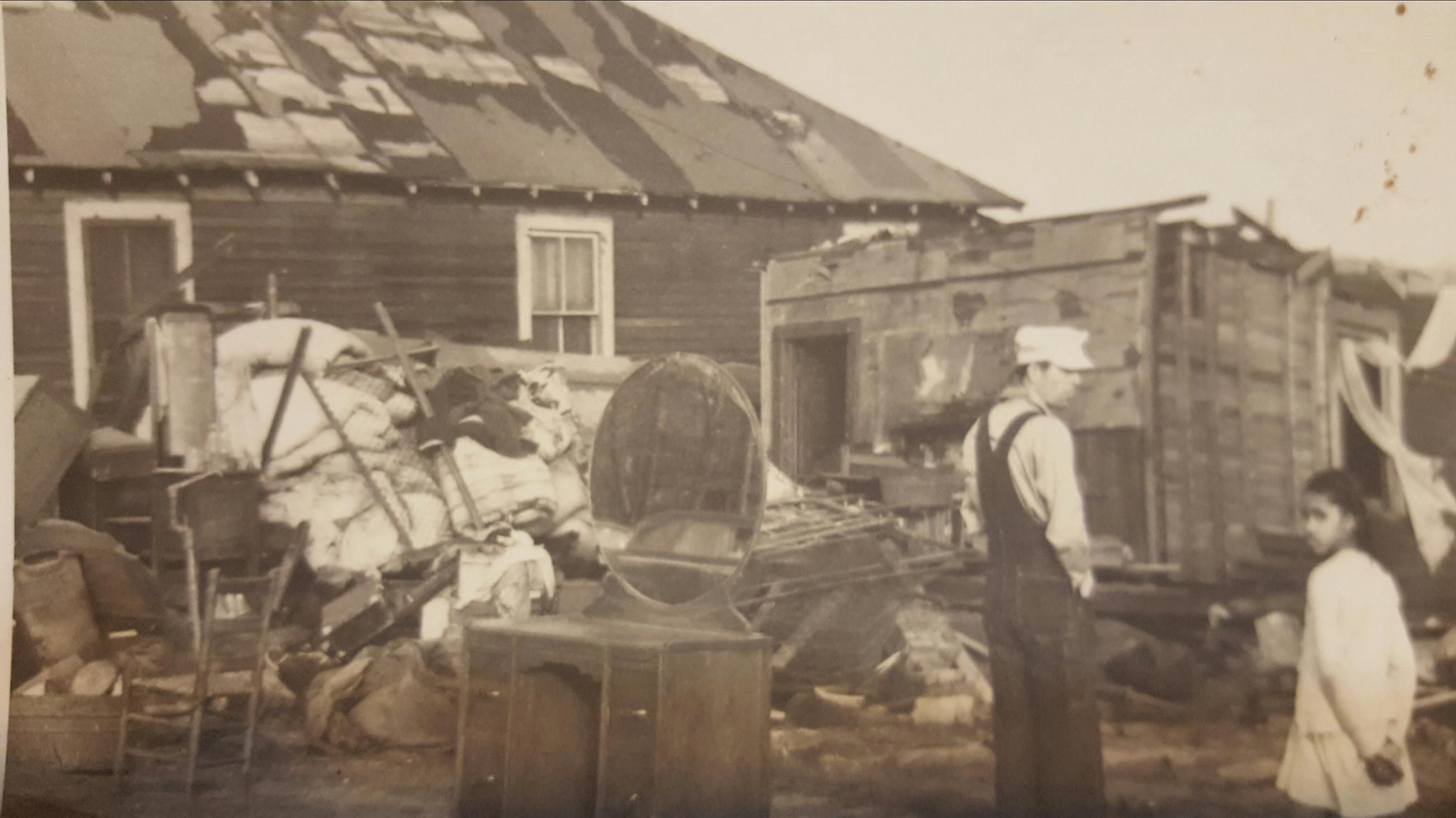
Associated Press Story: Here is an Associated Press account of the Tornado. Remember, the year is 1945. The reporting is very politically incorrect on the reporting of the fatalities, but that’s the way things were in that day and age.
“Montgomery alone counted its dead at 26, and its injured at nearly 300. Two government warehouses were leveled. In Chisholm, a cotton mill community, 35 homes were demolished and many others damaged in a 20-block area. Worst hit was a crescent shaped area on the southern and western outskirts of Montgomery, Ala., where more than 50 boxcars of a freight train were ripped and tossed about like match boxes.
After a tour of the Montgomery area Gov. CHAUNCEY SPARKS of Alabama ordered three companies of the State Guard into action to prevent looting.
Montgomery hospitals, jammed with the injured, were handicapped by a lack of lighting. The entire capital city was without electricity for several hours. Telephone service was disrupted.
A baby was born at one hospital only a few minutes before the lights came back on.
One of the Montgomery dead was MRS. EDGAR BROWN, a resident of the Chisholm community, whose husband had just arrived home on a furlough from the Army.
Maxwell Field at Montgomery escaped damage but was plunged into darkness for several hours.
The State Guard distributed cots at vacant buildings to provide temporary shelter.
Fifteen of the Montgomery dead were Negroes. State patrolmen removed the bodies of six Negroes from one house.
The Montgomery storm, which came on the heels of a day long downpour of rain, struck first in the area of the Army’s huge holding and reconsignment point and leveled two of the six warehouses there.
It sliced a path of destruction through the western edge of the city and hit with new fury at Chisholm, near Kilby Prison.
As news of the tornado spread to the city, curious and anxious residents flocked to the scene by the thousands and traffic congestion blocked the roads at some places.
Law enforcement officers and military police from Maxwell and Gunter Fields, however, soon cleared the streets.
Gas escaping from broken mains threatened further devastation but no serious fires were reported.
Cadets from the two air bases were pressed into service to help clear away the debris and the Red Cross, Salvation Army and civilian defense agencies helped care for the injured and homeless.”
SWARM OF TORNADOES: 7 significant tornadoes touched down that day across Alabama, F2 and stronger, mostly from 4:30 to 10PM. Even one F4 in Sumter county that killed 11 around Livingston.
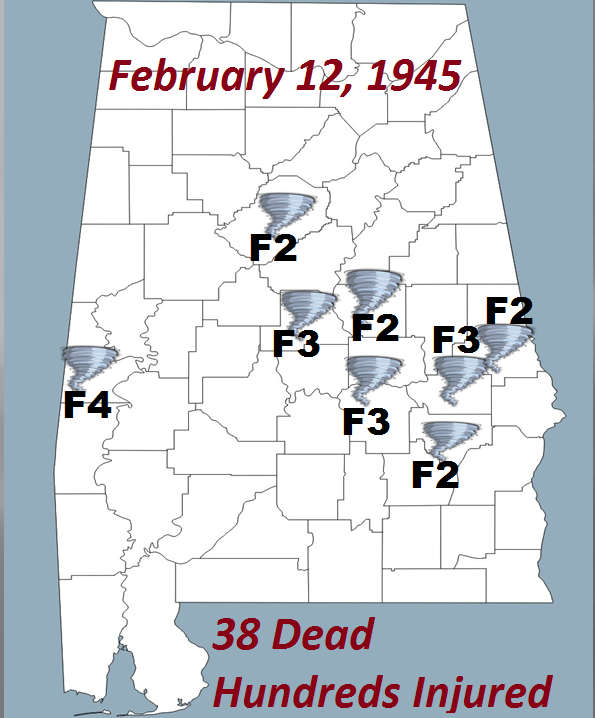
TORNADO DATA BASE: If you like detailed data, including times and tornado lengths and widths, here is the official Tornado Data Base from that day.
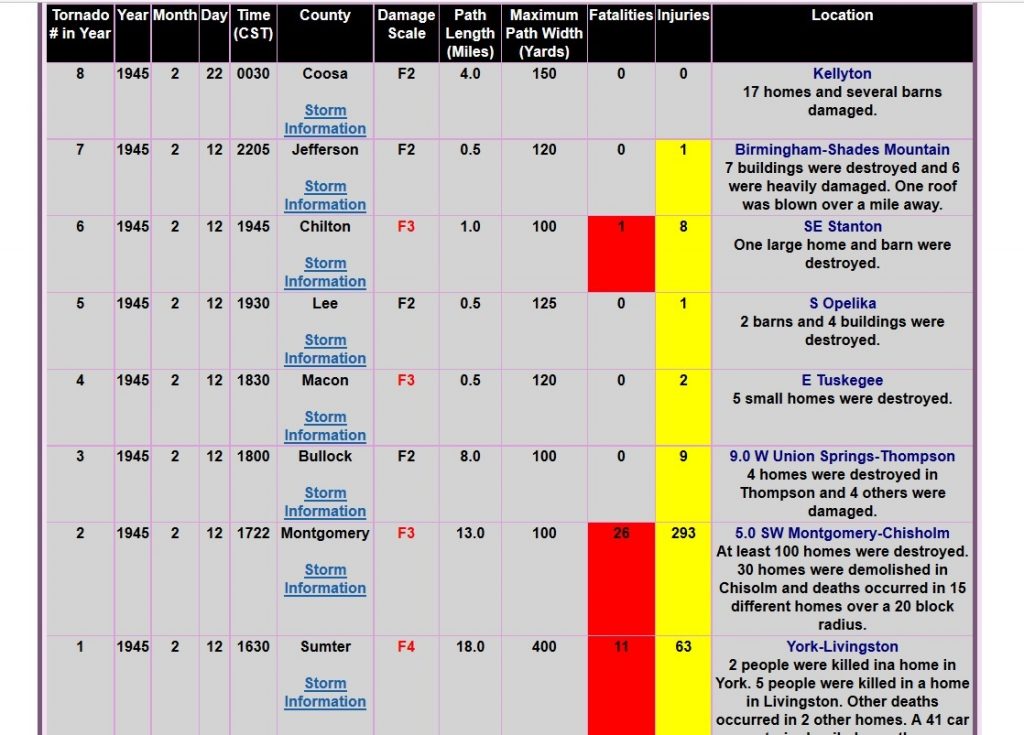
The 1945 Montgomery tornado was by far the strongest and deadliest tornado in the recorded history of this city. The only other that compares in more recent history would be the F3 tornado that moved across north Alabama on May 3, 1984, killing 5 and injuring 37.
